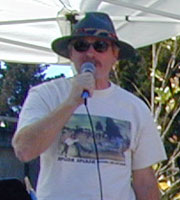The approach I’ve advocated instead is a crack-down on unacceptable behavior including aggressive panhandling, flagrant substance abuse, urinating or defecating in public spaces, and sleeping in doorways or other highly visible locations. While this sounds good in theory, in practice the most unkempt of the homeless are pretty much limited to use of public rest rooms which are few, far between, and locked overnight. Finding a place to crash is similarly problematic since sleeping in doorways is anathema to shopkeepers and equally unacceptable to park advocates such as myself.
I’m pointing out these contradictions to underscore the fact that these are all very complex, hot-button issues with no simple solutions. The intent of this and subsequent articles is to establish some of the parameters of these problems and begin a dialogue that, I hope, will contribute to a consensus on what makes for a sensible public policy.
The single most essential element in such a dialogue is a clearer perception of the parties involved. While our natural inclination is to lump every “street person” under the rubric “homeless” this catch-all designation is frequently used inaccurately.
The true homeless spend their days and nights on the streets, in doorways, in our parks, in shelters (when beds are available), and under our freeways. They are there due to mental illness, alcohol and drug addictions, ill health, and bad luck. In Oakland, as a whole, 2,500 to 3,000 individuals are considered homeless. The number of true homeless currently frequenting the Grand Lake district is quite small.
Their ranks were thinned this past June when a woman many of us knew only as Mary died from peritonitis. Mary lived in this neighborhood for eight to ten years, was quiet (even shy), and when she felt the need to panhandle would squat on the sidewalk near the Bank of America with a paper cup that she would jiggle slightly, allowing the clink of coins to substitute for a verbal spiel. Mary dressed well, kept herself amazingly clean, and patronized neighborhood shops and restaurants, where her presence went largely unnoticed but her passing was acknowledged by an article by Susan McDonough in the Oakland Tribune.
While Mary generally “passed,” many of our other neighborhood denizens look homeless but are not. One gentleman wanders our streets with his mind in a fog and his clothes in disarray — but lives in the family home. Others live in board-and-care homes but panhandle to supplement their meager assistance checks. One large contingent sells the Street Spirit Newspaper from more or less established locations. To the best of my knowledge, none is homeless, but they are low income and what they earn helps keep a roof over their heads.
This article is envisioned as the first in a continuing series about the homeless, in particular, and street people, in general. Coming next, a report on the Street Spirit, followed by one on Oakland’s Project Homeless Connect program.
If you wish to make a donation in cash, goods, or services or volunteer on November 13 or simply want more information, please contact Mike Church at 238-6950 or email him at mchurch@oaklandnet.com.





